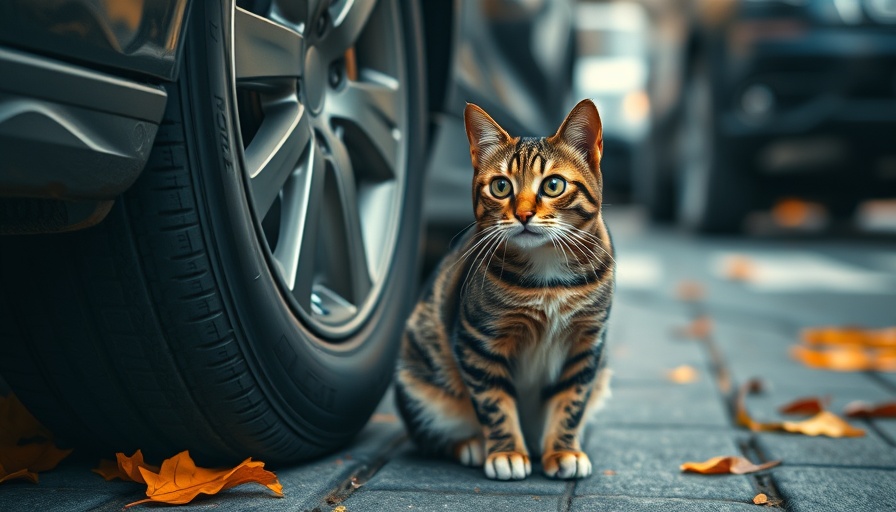
When Cats Collide with Cars: A Heartfelt Response
Every cat owner understands the unique bond shared with their feline friend. However, the dreadful moment a cat gets hit by a car is a scenario no one wants to face. With their natural curiosity and adventurous spirits, cats can sometimes put themselves in danger, leading to terrifying accidents. Understanding how to respond effectively can not only save your cat’s life but also ease the emotional turmoil such a situation brings.
Immediate Steps: A Calm Approach During a Crisis
The first and crucial step is to stay calm. This can be challenging during such a distressing moment, but your cat can sense your emotions. If accompanied, designate someone to drive while you focus on your pet. Check your cat for injuries, but be careful; frightened animals can react aggressively. Confirm their responsiveness by checking their gums for color and ensuring they’re breathing normally.
A Call for Help: Communication is Key
As you prepare for a trip to the nearest veterinary hospital, you should call ahead. Inform the veterinary team about the situation. Details such as how the cat was hit, their current state, and any visible injuries will help the emergency staff prepare for your arrival. This vital step can significantly influence the immediate care your cat receives.
Understanding Potential Injuries: What You Should Know
Injuries from vehicular accidents can vary widely, and while some cats may walk away with mere scratches, others could face life-threatening conditions. Understanding common injuries can help you better assess your cat's situation. Whiplash, broken bones, and internal injuries are among the serious outcomes of car accidents. Remember, a cat can sometimes hide their pain, making it essential to have them evaluated by a professional, even if they appear okay.
What Happens at the Vet? Insight into Veterinary Care
Once you arrive at the veterinary clinic, the team will likely prioritize your cat based on the nature of their injuries. Tests, including X-rays and blood tests, may be performed to determine the extent of damage. Being informed about what to expect can soothe your nerves, enabling you to be a supportive figure for your beloved pet.
Prevention is Better Than Cure: Tips to Keep Your Cat Safe
While we cannot always prevent accidents, there are proactive steps we can take. Keep your cats indoors, especially during peak traffic hours. If they do venture outside, consider leash training or utilizing enclosed outdoor spaces known as "catios." Many local communities offer resources and advice on how to build safe outdoor areas for your cats, enabling them to enjoy the fresh air while minimizing risks.
Emotional Healing: Navigating the Aftermath
After a traumatic event, both you and your cat will need emotional healing. Spend time with your pet as they recover, creating a comforting environment that includes soft blankets, quiet spaces, and plenty of love. Understanding the signs of behavioral changes in your cat can also help you identify any underlying distress or pain that could require further vet visits.
Reflecting on the Incident: Support Networks for Pet Owners
Dealing with a pet’s injury can be overwhelming and isolating. Many communities have pet owner support groups that allow you to share experiences while learning from others who have gone through similar situations. Consider reaching out to local organizations or online forums dedicated to pet care.
A Call to Adventure: Share Your Story
In sharing your experiences, your story may educate others about the importance of pet safety and the emotional journey of being a pet owner. Advocate for proper road safety around neighborhoods with heightened pet populations. Small steps can lead to monumental awareness!
In a world filled with uncertainties, the love between you and your cat remains a comforting constant. Know that awareness and action can prepare you for unfortunate events and further strengthen the bond between you both.
 Add Row
Add Row  Add
Add 


Write A Comment